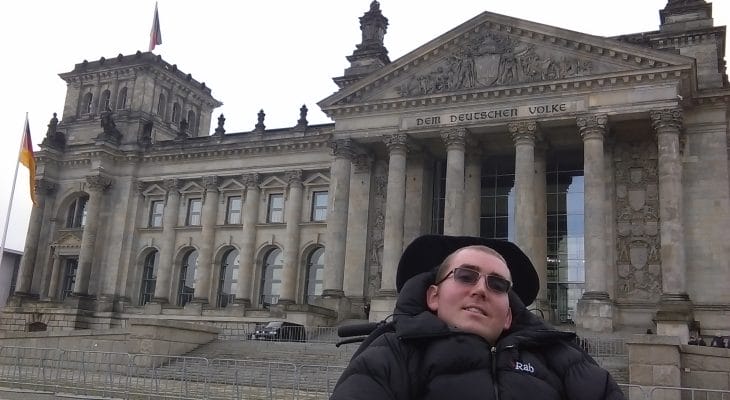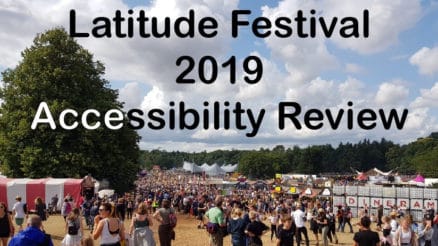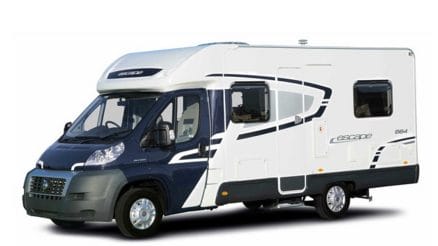Last Updated on 17/11/2019 by Alex Squire
This is an accessibility review of Berlin, one of the coolest and most accessible cities in Europe.
Berlin is a mixture of the old and the new. It is oozing history everywhere you look, as Berlin played a not so insignificant role in World War II and the Cold War. The centre of Berlin, a district called Mitte, is full of historic buildings such as the Reichstag, the Brandenburg Gate and Museum Island which is home to no less than five world-class museums, and is a UNESCO world Heritage site.
If you are into history, like I am, Berlin is definitely the place to come. There are so many museums it’s hard to count them all. The most obvious ones on Museum Island are well worth a visit. I only had time to visit three as it would be pretty much impossible to see all five in one day.
I went to the Pergamon Museum, where the star attraction is the Ishtar Gate from Babylon. It was reconstructed in the museum but because the room was a limited size they can only rebuild the smallest part of it. Even so, it is huge!
The Neues (new) Museum housed the Egyptian collection of which the most impressive piece was the bust of Nefertiti. It was so well preserved it looked like it could have been made yesterday, not 5000 years ago.
Finally, we went to the Altes (old) Museum which had lots of Greek and Roman art. I can spend all day looking around just one museum so it was a bit of a rush trying to see as much as I could of each museum.
Almost all of Berlin was destroyed during the Second World War and then divided once the Berlin Wall was built. When it came down in 1989 Berlin had to reinvent itself and there were major construction projects going on to restore the city. So, you will find impressive modern constructions like the Sony Centre only a short walk away from buildings built by the Nazis.
Nowadays you would never guess that the city had suffered so much trauma unless someone told you. But there are clues to Berlin’s past dotted all over the place if you know where to look. It was the scene of a major confrontation between US and Soviet troops in 1961, which saw tanks from both sides facing each other for 16 hours until the situation was resolved. Nowadays Checkpoint Charlie is a bit of a tourist trap, where you can pose for a photo. There is an exhibition nearby which gives you lots of information about the Cold War which was quite good though.
I am really interested in World War II so I wanted to see all the Nazi stuff that is left. A lot of the Nazis buildings were demolished unless they could be used. But there are still a few left and they are interesting to see. The former headquarters of the Nazi aviation ministry, headed by Herman Goering, survived the war unscathed and is now being used by the finance ministry.
One of the most interesting museums I went to was the Gedenkstätte Deutscher Widerstand (German Resistance Memorial). This is a museum dedicated to resistance to the Nazis, primarily the 20 July 1944 attempt to assassinate Hitler, as told in the movie Valkyrie. The building that the museum is located in, the Bendler Block, used to be the headquarters of the Wehrmacht , the German Armed Forces, and was where the conspiracy to assassinate Hitler was planned, and where the conspirators were subsequently executed. The assassination attempt was planned by amongst others Claus Von Stauffenberg who was head of the reserve army, and planted the bomb himself in a meeting at Hitler’s “Wolf’s Lair” headquarters. Unfortunately Hitler  survived and the conspirators were executed that same evening in the courtyard of the Bendler Block. It really brings history alive when you learn about such an important event in the actual building that it was planned. It also makes it all the more poignant when you can stand in the actual spot where the conspirators were executed.
survived and the conspirators were executed that same evening in the courtyard of the Bendler Block. It really brings history alive when you learn about such an important event in the actual building that it was planned. It also makes it all the more poignant when you can stand in the actual spot where the conspirators were executed.
Another interesting place I went to was Sachsenhausen concentration camp which  is about 20 miles north of Berlin. Obviously, it was a very poignant place as so many had died there. We went with a tour guide who showed us around the site. The only drawback to this was that he was rushing around a bit to show us everything so we didn’t get much of a chance to stop and read, and take everything in.
is about 20 miles north of Berlin. Obviously, it was a very poignant place as so many had died there. We went with a tour guide who showed us around the site. The only drawback to this was that he was rushing around a bit to show us everything so we didn’t get much of a chance to stop and read, and take everything in.
My favourite place to eat was the Hard Rock Cafe as it was such a cool place. There was rock ‘n’ roll memorabilia all over the walls, and good music was playing in the background. All of the staff were really friendly and they genuinely seemed like they loved working there. They were also very easy on the eye which always helps! Oh, and the food was really good too. Definitely worth a visit!
We also went to a chocolate restaurant called Fassbender and Rausch where everything on the menu had  chocolate in it. By the end of it I was having a bit of a chocolate overdose! They were chocolatiers so in their shop they had chocolate versions of famous building such as the Reichstag and the Brandenburg Gate… and yes, people do try to eat them.
chocolate in it. By the end of it I was having a bit of a chocolate overdose! They were chocolatiers so in their shop they had chocolate versions of famous building such as the Reichstag and the Brandenburg Gate… and yes, people do try to eat them.
Wheelchair Access
In terms of wheelchair access Berlin is very good. The pavements are generally very wide and flat, and there are not many cobblestones. There are plenty of dropped curbs so going on and off the pavement is not a problem. Public transport in Berlin is fantastic. All of the buses are wheelchair accessible as they have a ramp which can be manually folded out from the door. The driver usually came out to help me get on or move people out of the wheelchair space. Berlin has two types of trains that go throughout the city: the U Bahn which is underground, and the S Bahn which goes overground. Both of these are almost fully wheelchair accessible and most stations have lifts and step free access between the platform and the train. The only train which did not have step free access was the InterCity train that we needed to use to get to Sachsenhausen. But it may be impossible to book a ramp for it if we had more time. One strange thing is that there were no wheelchair accessible taxis in Berlin. I could not find any information about them online, and I did not see any when I was there. This was not really a problem because the public transport system is so good, you don’t really need to use taxis to get around. Most shops were accessible, and many had ramps for wheelchairs. Also almost every single disabled toilet I went in had tons of room, which is not the case in England. I was very impressed with this! All of the major attractions were wheelchair accessible, apart from the TV tower which wheelchair users are not allowed to go up for some reason.
So, I would definitely recommend Berlin as a place to visit, especially if you are interested in history. For wheelchair users in particular Berlin is a fantastic destination because wheelchair access seems to be an important consideration almost everywhere.









A building chocolate..? Now that’s hard to resist! 🙂
The staff said that every day they find teeth marks in them! They are very hard to resist 🙂